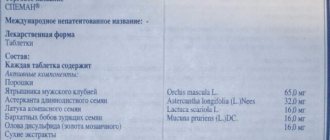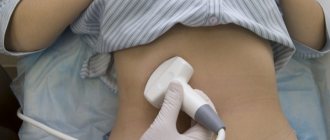Laser enucleation of prostate adenoma is an effective minimally invasive method for removing a benign prostate tumor. The operation is prescribed for men when conservative therapy is not effective or there are pronounced clinical manifestations. The advantage of using a laser is that it allows tumor removal in patients with severe medical conditions. Surgery is considered the “gold standard” for the treatment of hyperplasia, which rarely causes significant complications.
Removal of prostate adenoma using a Biolitec AG laser
The Biolitec AG laser has a wavelength of 1480 nm and a power of 180 W. During operation, the laser beam constantly penetrates to a depth of > 1mm. With its help, adenomatous tissue is evaporated. The operation is performed under spinal anesthesia.
The operation to remove prostate adenoma ends with drainage of the bladder for 2-3 days using a urethral catheter. The duration of hospital stay is about 5 days. The patient takes antibacterial and anti-inflammatory therapy as prescribed by the doctor. Intense physical activity, warming procedures (baths, saunas), and eating spicy food are prohibited for 2.5-3 months.
Also, removal of prostate adenoma with a Biolitec laser can be performed for urethral strictures, bladder stones, urethral condylomas, also as palliative treatment for prostate cancer, as the first stage before a Hi-Fu therapy session.
The Biolitec AG laser does not affect sexual function, and the amount of bleeding is minimal during surgery to remove prostate adenoma. It can be used in patients taking anticoagulant therapy.
Interstitial laser therapy
Prostate adenoma in men is treated in another way. It's called interstitial laser therapy. Adenoma tissues are exposed to a temperature of 85C. But in this case, the laser device is inserted into the prostate gland. Several areas undergo coagulation. Their number directly depends on the size of the adenoma. If the adenoma measures no more than 35 cm3, then four sections are sufficient. If the volume of the prostate gland is more than 35 cubic meters. see ablation of six or eight sections is performed.
Removal of prostate adenoma with GreenLaser laser
GreenLaser has a wavelength of 532 nm and a power of 120 W, due to which the laser has a green color (photo 3). During operation, its beam penetrates 0.8 mm. Like the Biolitec AG laser, GreenLaser is used to vaporize prostate adenoma - removal by evaporation. The technique is similar to Biolitec.
Photo 3
The operation ends with drainage of the bladder using a urethral catheter. The patient takes antibacterial and anti-inflammatory therapy as prescribed by the doctor. The duration of hospital stay is about 3 days. Intense physical activity, warming procedures (baths, saunas), and eating spicy food are prohibited for 2.5-3 months.
GreenLaser can be used for bladder stones, as palliative treatment for prostate cancer, as the 1st stage before Hi-Fu therapy.
It is worth noting that when vaporizing a prostate adenoma, the surgeon does not receive material for histological examination, as a result of which the operating doctor must have accurate information excluding prostate cancer.
"Green Laser" "Green Light Laser" treatment of prostate adenoma
Laser vaporization using potassium titanyl phosphate in the treatment of prostate adenoma
The history of transurethral operations goes back about four centuries. The first transurethral operation to restore patency in the urethra due to urethral stricture was performed by the famous French surgeon Ambruise Pare in the sixteenth century using a curette and a pointed hollow bougie. However, despite the far-reaching progress and certainly successful use of the current method of transurethral resection (TUR) of the prostate gland, which is the gold standard in the treatment of prostatic hyperplasia today. Read more about why even the Green laser is inferior to laser enucleation HoLEP...) there is an assumption that by 2021 the number of men over 60 years of age will triple, and as we know, the peak incidence of benign prostatic hyperplasia occurs at this age. This creates a need for the emergence of alternative, new methods of treating prostate adenoma. One of these options was laser adenomectomy (LA), which we will mention more than once on our website. Recently, a meta-analysis of a large number of randomized trials was carried out and it turned out that TUR has no advantages over LA. The disadvantages of the laser include the lack of histological material, since there is none left, the adenoma tissue simply evaporates. But if you look at this drawback from the other side, it can be easily avoided by performing an early biopsy if necessary (if there is an elevated PSA level). Other laser methods NdYAG in Side fire-Technik, VLAP and ILC procedures due to the low ability to remove tissue, complications and technical difficulties are now practically abandoned (Treatment of prostate adenoma with laser in the urology clinic of the First Medical Center named after I.M. Sechenov. Read more about why Green laser is inferior to HoLEP laser enucleation...)
In this article we will take a closer look at the Potassium Titanyl Phosphate (KTP) laser. The KTP laser with a wavelength of 532 nm emits a visible beam of green color, the radiation is practically not absorbed by water but is selectively absorbed by hemoglobin, hence its name “photoselective”. The penetration depth reaches 0.8 mm, which is most optimal for prostate surgery. The mechanism is simple: the KTP laser beam, due to the fact that it is not absorbed by water, reaches adenomatous tissue at the speed of light and is then absorbed not by the tissue itself, but by the hemoglobin contained in them. In this case, the heat released as a result of the absorption of radiation causes water to boil in the adenoma tissue, the resulting bubbles move apart and destroy the structure of the adenoma tissue. The evaporation process itself amazingly absorbs heat from the tissues, resulting in the thickness of the coagulation zone not exceeding 1–2 mm and, as a result, excellent hemostasis. Consequence: minimal incidence of dysuria caused by tissue necrosis and no development of postoperative hyponatremia.
Although FVP and TUR adenoma share the same patient selection criteria, surgical guidelines, and goals, the technique used to perform these procedures differs significantly. TUR of the prostate adenoma occurs when an electrical loop moves through the tissue passing through the working channel of a large resectoscope (26–28 F). With FVPZh, a oscillatory-rotational movement of a light guide passing through a small laser cystoscope (22–24 F) occurs with a lateral glow with constant irrigation. The light guide rotates up and down in an arc of 35-40°, and its end is at a minimum working distance (1 mm) from the tissue. Thus, the energy of the KTP laser is evenly distributed over the surface. Evaporation of tissue occurs as a result of the formation of steam bubbles, which are washed away by the irrigating saline solution. Coagulation when using a KTP laser in the event of bleeding is performed by increasing the working distance to the tissue within 5 mm, or by reducing the laser power to 30 W, without changing the position of the fiber. Vaporization of the prostate gland begins in the area of the bladder neck, continues in the area of the lateral lobes at the level of the seminal tubercle, and stops upon reaching the external sphincter. Vaporization should begin with the protruding middle lobe, forming the necessary channel for evaporation of the side lobe. Generally, FEP is performed in an outpatient surgery center or in a day-patient clinic. General or spinal anesthesia is usually used. Patients without significant intercurrent diseases with an average size of the prostate gland, good bladder function and satisfactory results of surgical intervention may not have a urethral catheter installed. To study the effectiveness and safety of using this method of vaporization with a KTP laser in clinical practice, clinical trials were conducted within the walls of the Research Institute of Urology in 18 patients whose age ranged from 55 to 80 years and were diagnosed with prostatic hyperplasia.
In this study of a new method, vaporization with an 80 W KTP laser, the following results were obtained. The duration of the surgical intervention was a little more than one hour, about 80 minutes. Both during surgery and in the early postoperative period, the rinsing waters did not contain blood. If there was a need to install a urethral catheter, the duration was 1.07 ± 0.50 days. Complications, if any, manifested themselves in the form of mild dysuria, short-term hematuria, short-term urinary incontinence, and only in one case did a stricture of the bulbous urethra occur. Such a complication as erectile dysfunction did occur; retrograde ejaculation was noted only in 48% of cases.
In conclusion, I would like to say that the currently available publications on the potassium titanyl phosphate laser, which have undergone peer review, clearly indicate that this method is effective and safe, in no way inferior to the traditional TUR of the prostate. Of course, there are many advantages, including the absence of hyponatremia, the absence of blood loss, the possibility of surgical placement on an outpatient basis, the absence in most cases of the need for bladder drainage, and the patient’s quick return to normal activities. But I would like to note that despite all the advantages and safety of laser vaporization of the prostate gland, errors when performing this method can lead to undesirable and serious consequences. We should not forget that the rate of re-operations due to persistent obstructions with urinary disorders after 12 months, according to data provided by our European colleagues, reaches 8%.
MAKE AN APPOINTMENT WITH A UROLOGIST
ASK A QUESTION TO A UROLOGIST
HoLEP
In our clinic, holmium laser enucleation of prostate hyperplasia (HoLEP) is widely used and has proven its effectiveness.
Before HoLEP, holmium laser resection of prostatic hyperplasia (HoLPR) was used, first performed by Gilling in 1996. However, it had a significant disadvantage associated with the duration of implementation of this operational manual. As a result, a tool was invented - a morcellator, thanks to which it became possible to abandon the resection of adenomatous tissue and remove it as a single block - enucleation.
In our clinic, HoLEP is performed using a Lumenis PowerSuite laser unit (photo 4), which has a power of 100 W and a wavelength of 2.1 nm, and a Lumenis Versacut morcellator (photo 5).
Photo 4
Photo 5
The holmium laser has a penetration depth of 0.4 mm.
How is the operation performed?
Laser enucleation comes in several types, depending on the type of laser beam. In Moscow clinics, men have prostate adenoma removed using holmium (Holep) or thulium (Thulep) enucleation.
Thulium enucleation (Thulep)
A laser beam differs from a holmium beam in that the radiation flow is continuous. The laser penetrates the tissue by 0.2 mm, guaranteeing a soft section. The operation is carried out as follows:
- The doctor inserts a resectoscope into the patient's bladder.
- A laser fiber is inserted into the device.
- The doctor makes incisions through the thickness of the overgrown prostate tissue.
- Through the incisions, the left lobe of the prostate gland is removed, and the removed tissue is moved to the bladder. Then the right lobe is isolated.
- The laser fiber in the device is replaced with a morcellator, which crushes the removed tissue for further removal.
Holmium enucleation
The adenoma is removed using a laser beam, which is formed using a Ho:YAG holmium crystal. With Holep enucleation of prostate adenoma, the beam creates a precise cut line and penetrates deeper than 0.4 mm. With this method, the cut-off benign formations are drained through the bladder. Tissue particles, as in thulium enucleation, are crushed using a morcellator. The technique is similar to the thulium enucleation technique.
The difference between the methods is that the laser, which is used in ThuLEP due to a dense beam of energy, makes a soft excision. This promotes an improved tissue healing process.
Progress of the operation to remove prostate adenoma
In order to avoid retrograde ejaculation, adenomatous tissue is dissected with a laser fiber anteriorly 1 cm from the seminal tubercle (connect the points at 4 o'clock o.c. with 8 o'clock o.c.) Subsequently, an incision is made from the bladder to the seminal tubercle and creating two grooves at 5 and 7 o'clock o.c., thereby highlighting the middle share. Using the instrument tube, it is necessary to mechanically lift the adenomatous tissue of the middle lobe (anatomical separation of the layers of adenoma) and cut it off from the prostate capsule. Afterwards, the middle lobe of the prostate adenoma is mechanically displaced with an instrument into the lumen of the bladder. The second stage involves enucleation of the right and left lobes of the adenoma.
It must be remembered that the laser fiber must move from the center to the periphery (from 5 and 7 o'clock o.c. to 2-3 and 9-10 o'clock o.c.). Further furrows from 12 o'clock o.c. laterally they connect at 2 and 10 o’clock. The right and left lobes of the prostate adenoma are also displaced by the instrument into the bladder. The next step is hemostasis (it is necessary to change the instrument to a monopolar or bipolar). The final stage of the operation: morcellation of adenomatous tissue displaced into the lumen of the bladder using a morcellator. Postoperative material is sent for histological examination. The surgical procedure ends with drainage of the bladder with a urethral catheter for two to three days.
Photo 6 (picture before surgery)
Photo 7 (picture after surgery)
There are a number of advantages of HoLEP over other operations for adenoma: complete removal of all prostate adenoma tissue, blood loss during surgery is insignificant or absent. The volume of the adenoma does not limit the performance of HoLEP, the ability to use physiological solution as an irrigation fluid during surgery, the duration of stay in the clinic is from 3 to 5 days, the duration of emptying the bladder with a urethral catheter is about 2-3 days, and HoLEP has no effect on erectile function.
Preparing for surgery
Before the operation, the patient must undergo an outpatient examination:
- Urine and blood analysis for PSA levels.
- Electrocardiography, chest x-ray.
- Ultrasound examination of the urinary system.
- Uroflowmetry.
- Examination for the presence of residual urine in the bladder.
- Consultation with an anesthesiologist.
It is important to tell your doctor if you are taking blood thinners. Their use must be stopped 7 days before surgery.
Before removal of prostate adenoma
To conduct HoLEP in the urological clinic of the First Moscow State Medical University named after. THEM. Sechenov, the patient must take and undergo the following tests and procedures:
- General blood analysis
- Blood chemistry
- Coagulogram
- General urine analysis
- Test for infections (HIV, syphilis, hepatitis B and C)
- ECG
- Chest X-ray
- Consultation with a therapist (to exclude somatic diseases that may interfere with the implementation of HoLEP at this stage)
- Uroflowmetry
- Complex urodynamic study (if the patient has a urethral catheter or cystostomy drainage during hospitalization)
Anesthesia for removal of prostate adenoma
HoLEP is performed under spinal anesthesia (Figure 8, Figure 1).
Photo 8
Fig 1.
The patient must also provide the attending physician with the following information:
- Are you taking antiplatelet agents and anticoagulants (aspirin, warfarin, cardiomagnyl, Plavix, clapidogrel)
- Presence of a pacemaker, endoprostheses and other foreign bodies in the body
Severe case of adenoma
The next stage is when, when urinating, the patient has to strain his abdominal muscles and urinate in several stages. An advanced case of adenoma is characterized by headache, thirst, and dry mouth. The patient is in an eternally irritated state, which is understandable: urine no longer flows, it oozes drop by drop, and involuntarily, while the patient constantly experiences a feeling of fullness in the bladder. Don't torture yourself and don't wait for the disease to go that far. The sooner you see a doctor, the more painless the treatment will be for you.
After removal of prostate adenoma
During the day after surgery, the patient needs complete rest to prevent postoperative bleeding. 8-10 hours after surgery, the patient is allowed to eat. The bladder will be emptied with a urethral catheter for 2-3 days.
There may be some old blood in the urine. After removal of the urethral catheter, the patient may experience pain during urination for 1 day. Clots of old blood may leave the bladder along with urine.
After the patient is released from the hospital, the following recommendations of the attending physician must be followed:
- Limiting physical activity for 2.5 months
- Taking antibacterial therapy (as prescribed by the attending physician)
- Taking anti-inflammatory therapy (as prescribed by the attending physician)
- Drink plenty of fluids (at least 2 liters of water per day)
- Limiting salty, spicy and peppery foods
- Do not take thermal treatments for 2.5 months
- Sexual peace for 3-4 weeks
- Consultation at the clinic after 3 months
What is an adenoma?
An adenoma is a benign formation in the prostate. First, a small nodule - one or several - forms in the prostate gland. Gradually, the nodule grows and compresses the urethra, which passes through the prostate gland. The urethra narrows, and the man begins to have problems with urination. At first it’s just not a very pleasant sensation, and then the real torment begins. The urine stream becomes weak, the bladder does not empty completely, urination becomes more frequent, and you have to get up several times at night. One of the most unpleasant manifestations of adenoma during this period is the inability to restrain the urge to urinate, as it is very strong. If there is no toilet nearby, men are often forced to urinate on the street. But even this more than unpleasant fact does not bring all patients to the doctor’s office.










